In the given figure an ideal gas changes its state from A to state C by two paths ABC and AC.
_E01_269_Q01.png)
(i) Find the path along which work done is the least.
(ii) The internal energy of gas at A is 10J and amount of heat supplied to change its state to C through the path AC is 200J. Calculate the internal energy at C.
(iii) How much is the heat involved in the process ABC and ADC?
The correct Answer is:AC,170J,10J
(i) WAC<WABC (Area under PV-graph gives work)
(ii) UA=10J
QAC=200J
ΔWAC=12×(6−2)×(15+5)=4×202=40J
⇒Q=ΔU+W⇒200=(UC−10)+40
⇒UC=200+10−40=210−40=170J
(iii) QAB=ΔUAB+WAB=(UB−UA)+WA→B=(20−10)+0=10J
_E01_269_S01.png)
Topper's Solved these Questions
- GEOMETRICAL OPTICSBOOK - ALLENCHAPTER - GEOMETRICAL OPTICSEXERCISE - EXERCISE - 04 (B)
15 Videos
- GEOMETRICAL OPTICSBOOK - ALLENCHAPTER - GEOMETRICAL OPTICSEXERCISE - EXERCISE - 05 (A)
73 Videos
- GEOMETRICAL OPTICSBOOK - ALLENCHAPTER - GEOMETRICAL OPTICSEXERCISE - Comprehension Based Questions
66 Videos
- CURRENT ELECTRICITYBOOK - ALLENCHAPTER - CURRENT ELECTRICITYEXERCISE - All Questions
427 Videos
- GRAVITATIONBOOK - ALLENCHAPTER - GRAVITATIONEXERCISE - EXERCISE 4
9 Videos
Similar Questions
In the given figure, an ideal gas changes it state from A to state C by two paths ABC and AC.
(i) Find the path along which work done is the least.
(ii) The internal energy of the gas at A to 10J and the amount of heat supplied to change its state to C through the path AC is 200J. Calculate the internal energy at C.
(iii) The internal energy of the gas at state B is 30J. Find the amount of heat supplied to the gas to go from A→B.
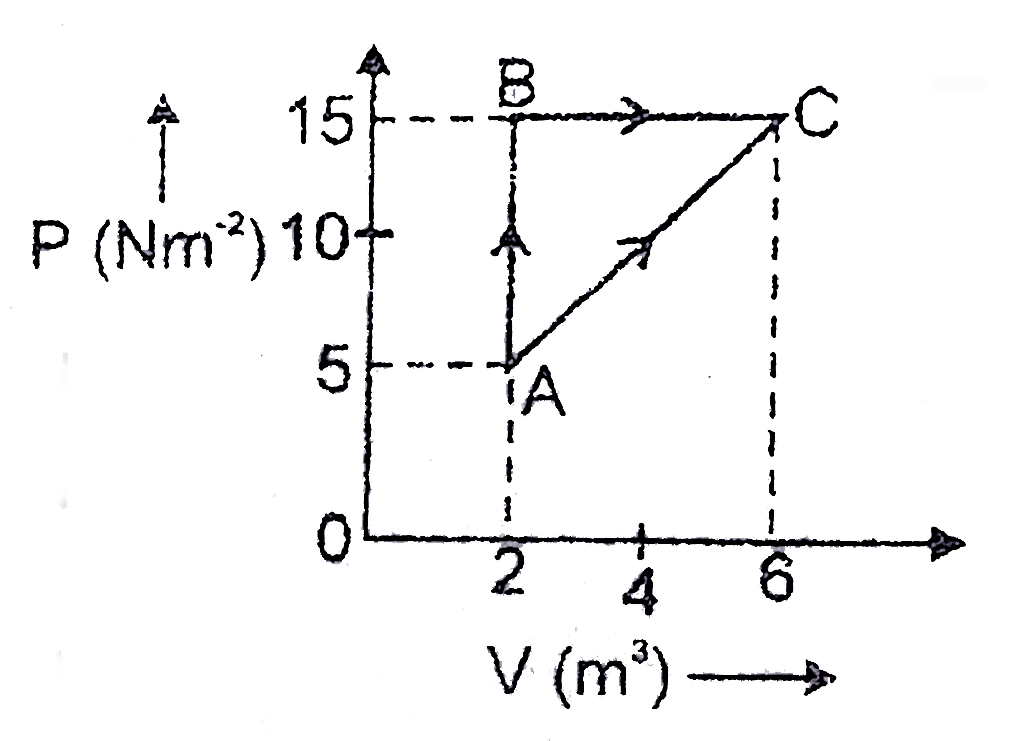
View Solution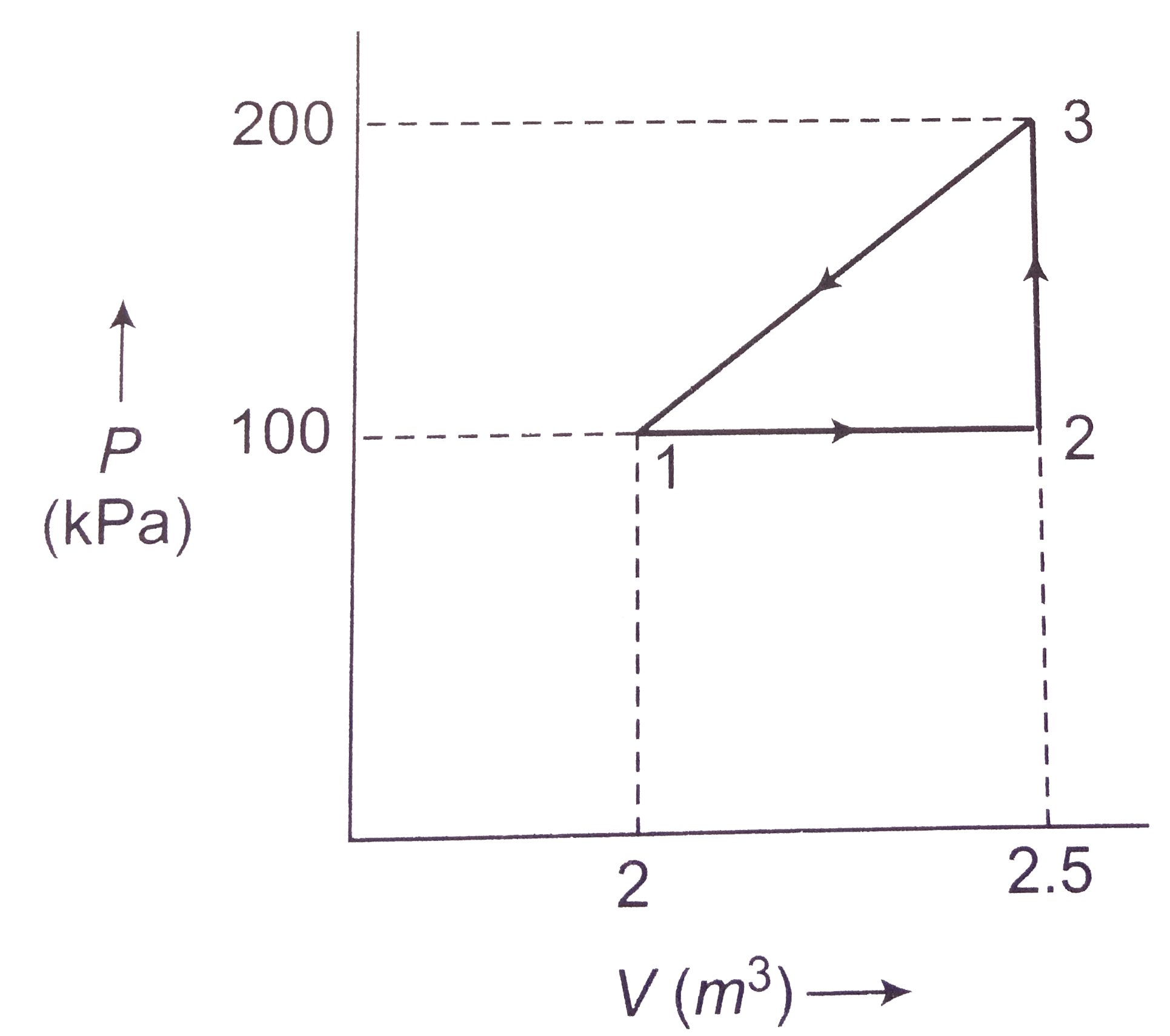
In the figure an ideal gas changes is state from state A to state C by two paths ABC and AC.
(a) Find the path along which the work done is least.
(b) The internal energy of the gas at A is 10 J and the amount of heat supplied to change its state to C through the path AC is 200 J. Calculate the internal energy at C.
(c) The internal energy of the gas at state B is 20 J. Fid the amount of the heat supplied to gas to go from A to B.
View Solution
Knowledge Check
In the given an ideal gas can change its state from A to C by two paths ABC or AC. Then
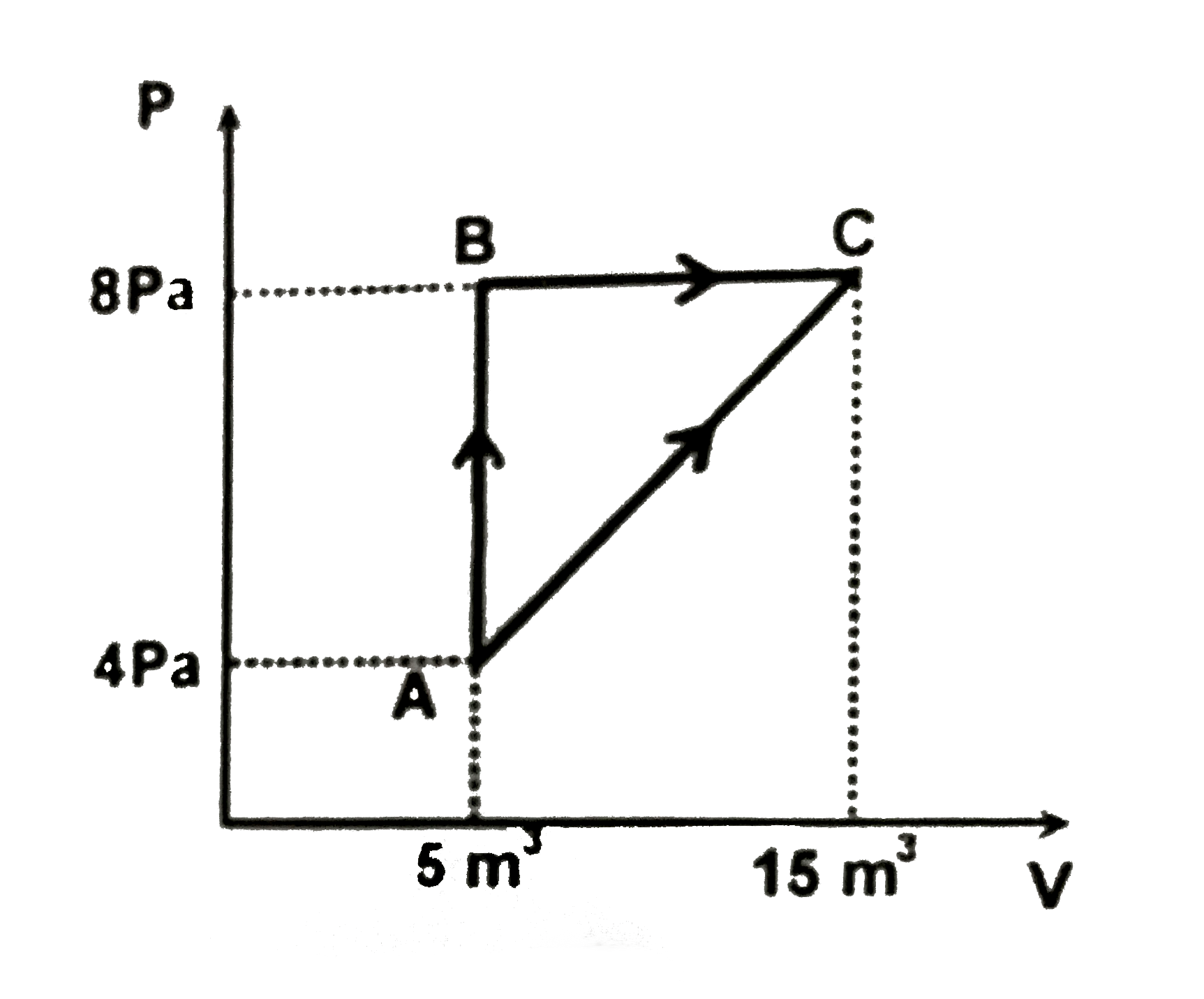 AIf the internal energy of gas 'A' is 10J and the amount of heat supplied in path AC is 200J, then the internal energy of gas at 'C' is 150JBIf the internal energyof gas at 'A' is 10J and the amount of heat supplied in path AC is 200J, then the internal energy of gas at 'C'is 75JCIf the internal energy of gas a state B is 20J. Then the amount heat supplied to the gas to go from A to B may be 5 Joule.DIf the internal energy of gas at state B is 20J. Then the amount of heat supplied to the gas to go from A and B must be 10 Joule
AIf the internal energy of gas 'A' is 10J and the amount of heat supplied in path AC is 200J, then the internal energy of gas at 'C' is 150JBIf the internal energyof gas at 'A' is 10J and the amount of heat supplied in path AC is 200J, then the internal energy of gas at 'C'is 75JCIf the internal energy of gas a state B is 20J. Then the amount heat supplied to the gas to go from A to B may be 5 Joule.DIf the internal energy of gas at state B is 20J. Then the amount of heat supplied to the gas to go from A and B must be 10 JouleIn the given figure, an ideal gas changes its state from A to C by four paths. The path for which work done is least, is
 AABCBAECCADEDAFC
AABCBAECCADEDAFCA system is changed from state A to state B by one path and from B to A by another path. If ΔE1 and ΔE2 are the corresponding changes in internal energy, then
AE1+E2=−veBE1+E2=+veCE1+E2=0DNone of these
Figure. Shows an ideal gas changing its state A to state C by two different path ABC and AC.
a. Find the path along which the work done is the least.
b. The internal energy of the gas at A is 10J and the amount of heat supplied to change its state to C through the path AC is 200J. Find the internal energy at C.
c. The internal energy of the gas at state B is 20J. Find the amount of heat supplied to the gas to go from state A to state B.
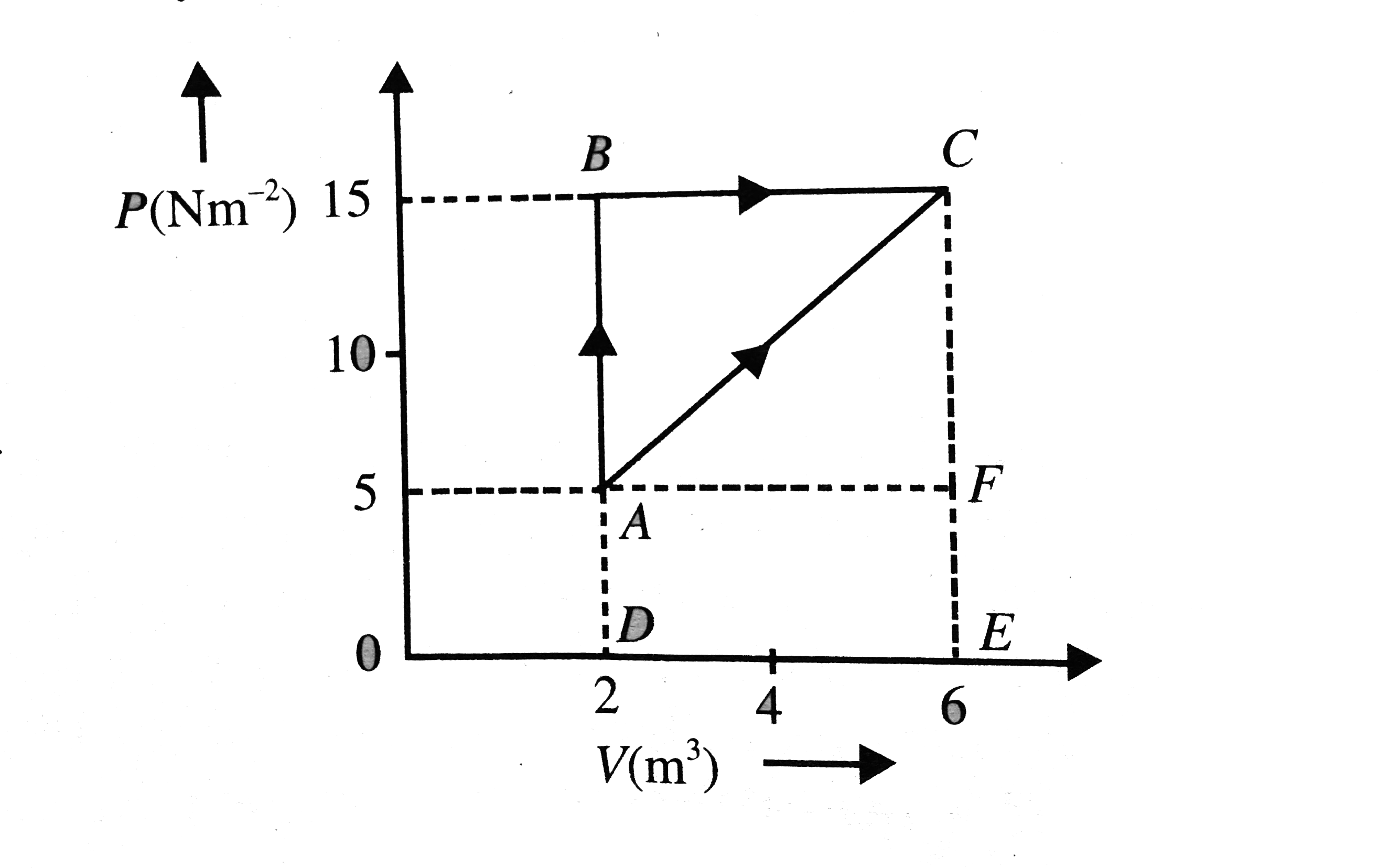
View SolutionThe given figure shown a change of state A to state C by two paths ABC and AC for an ideal gas. Calculate the :
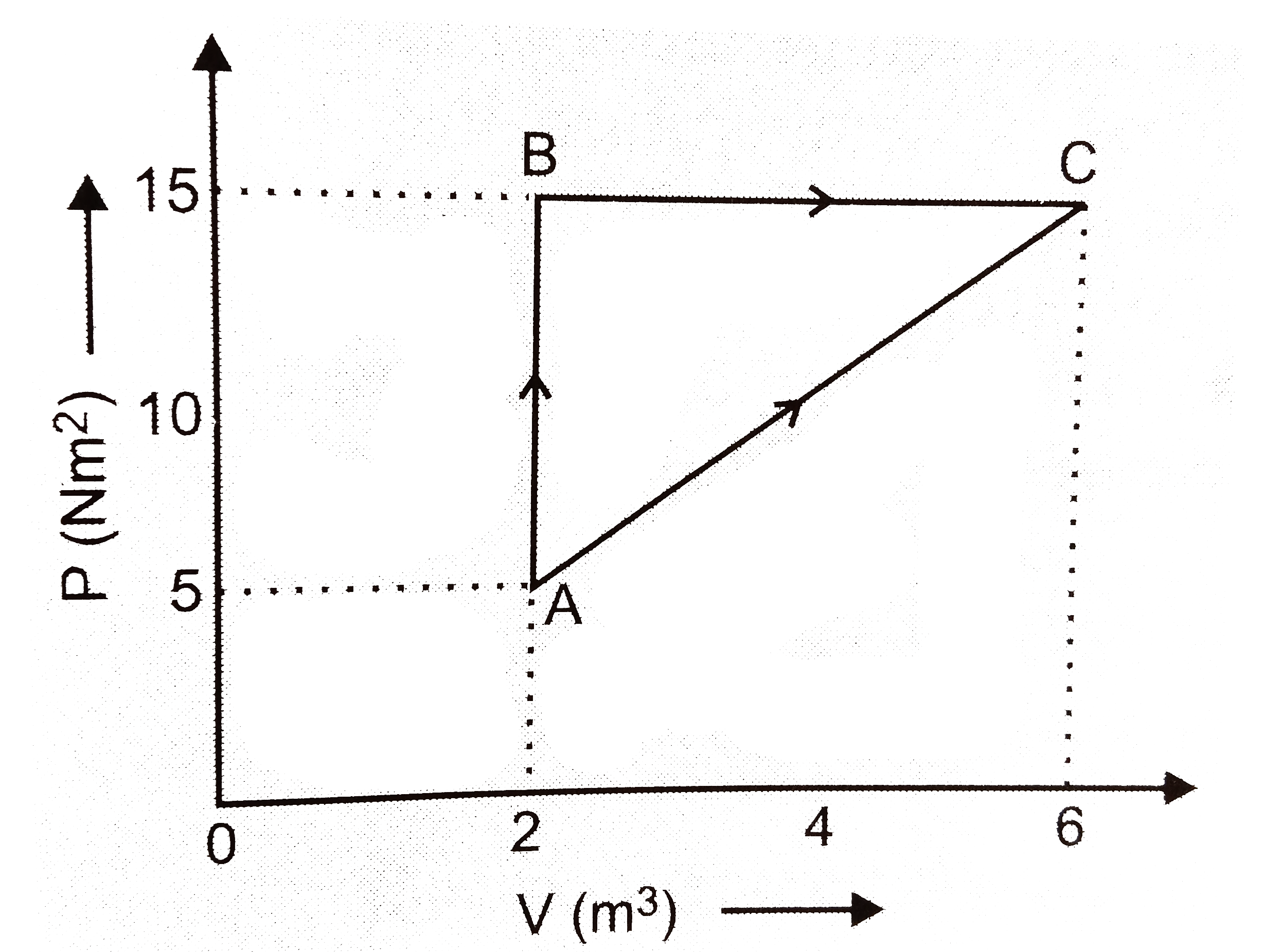
(a) Path along which work done is least.
(b) Internal energy at C if the internal energy of gas at A is 10J and amount of heat supplied to change its state to C through the path AC is 200J.
(c) Amount of heat supplied ot the gas to go from A to B, if internal energy of gas at state B is 10J.
View SolutionThe given figure shows a change of state A to state C by two paths. ABC and AC for an ideal gas. Calculate the ,
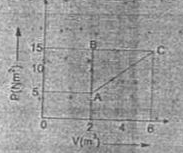
(a) Path along which work done is least.
(b) Internal energy at C if the internal energy of gas at A is 10 J and amount of heat supplied to change its state to C through the path AC is 200 J.
( c) Amount of heat supplied to the gas to gd from A to B, if internal energy of gas at state B is 10 J.
(ii) In an insulated contained 1 mole of a liquid, molar volume 100 mL. is at 1 bar liquid is steeply taken to 100 bar, where volume of liquid decreases by 1 mL. Find ΔE and ΔH for the process?
(iii) 14 g of oxygen at 0∘ C and 10 atm are subjected to reversible adiabatic expansion to a pressure of 1 atm. Calculate the work done in
(i) Litre atm.
(ii) Calorie (Given, CpCv=1.4).
View Solutioncalculate the change in internal energy of a gas kept in a rigid container when 100 J of heat is supplied to it.
View SolutionFor a gaseous state if heat supplied to the system is 100 J and work done by the system is 25 J. then internal energy of the system is
View Solution
